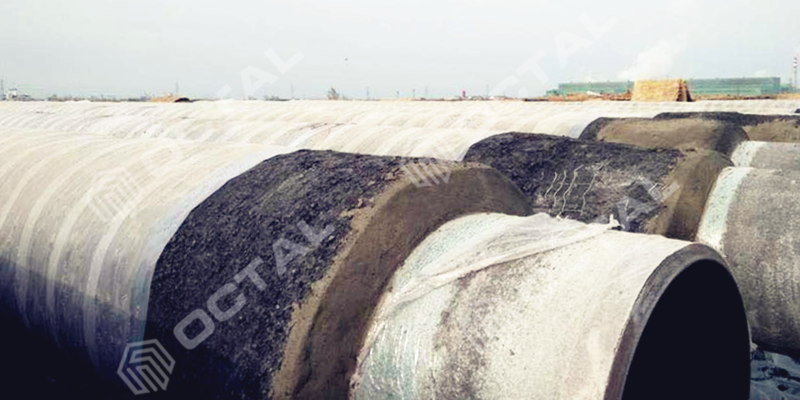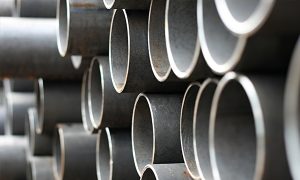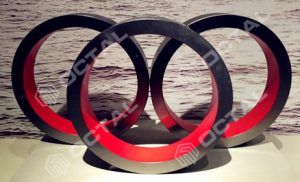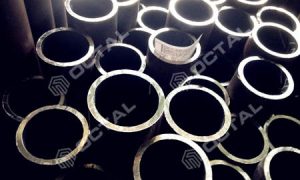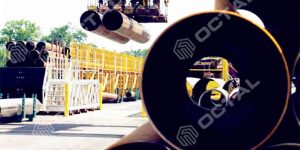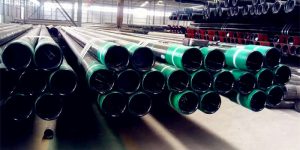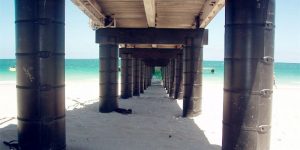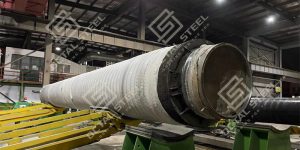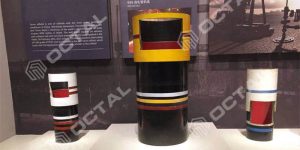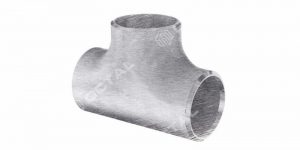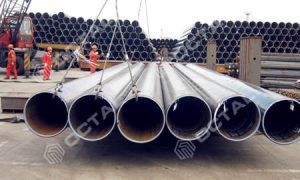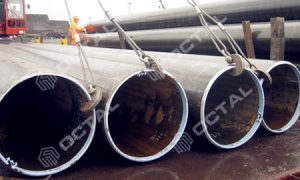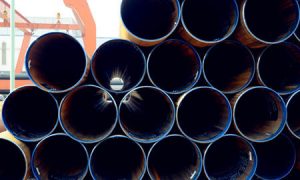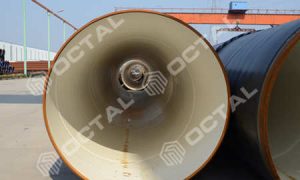Concrete Weight Coating Pipe CWC – Submarine Pipeline
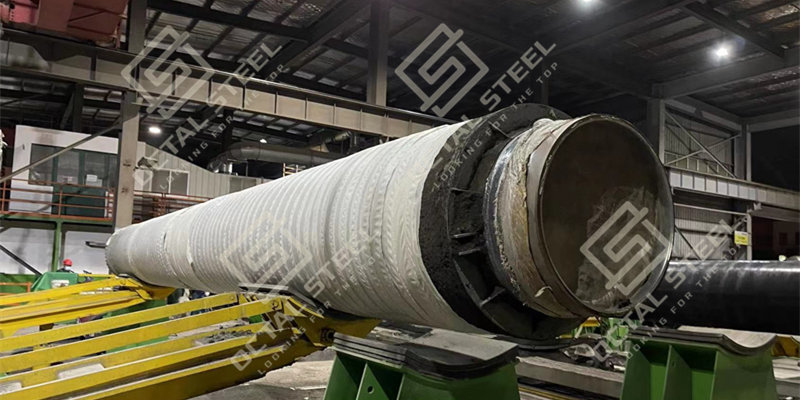
A concrete coated pipe, also known as a concrete weight coating pipe (CWC pipe), is a steel pipe that has been externally coated with concrete. The concrete coating consists of a mixture of cement, aggregates, reinforced steel mesh, and water. The purpose of this coating is to provide strong downward force protection or negative buoyancy for the pipelines. These pipes are commonly used in sub-sea (submarine) pipelines, as the concrete coating adds the necessary weight to withstand the pressure of seawater.
Concrete Weight Coated Pipe types and dimensions
To accommodate various conditions in the sub-sea environment, concrete coated pipes are available in different dimensions and can be equipped with different weight, thickness, and density of concrete coatings. Additionally, they can be processed with anti-corrosion coatings and insulation coatings to enhance their durability and performance.
Below are the ranges from Octal:
Dimensions ranges for Concrete Weight Coating Pipe
Mother pipe standards: API 5L Grade B to Grade 80. ISO 3183 Grade L245 to L555.
Diameter range: 6” to 60”
Pipe Thickness: SCH 20, SCH 40, SCH 80
Length: Up to 12 meters
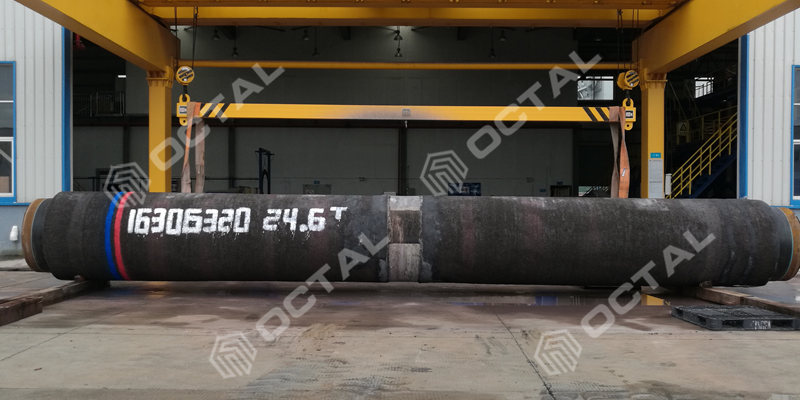
Concrete weight coating density
Concrete formulation can be tailored to any specified density specifications, normally 140, 165 and 190 pounds per cubic foot, smaller or grater densities are also applicable.
Density range: 1800-3450 kg/m3 (112-215 lbs/ft3)
Concrete compressive strength: From 3000 psi to 7200 psi. Up to 50 Mpa.
Concrete thickness: 1 inch to 8 inch. (25 mm to 200 mm)
Common Density: 3040 KG/m3
Concrete Weight Coating Plants
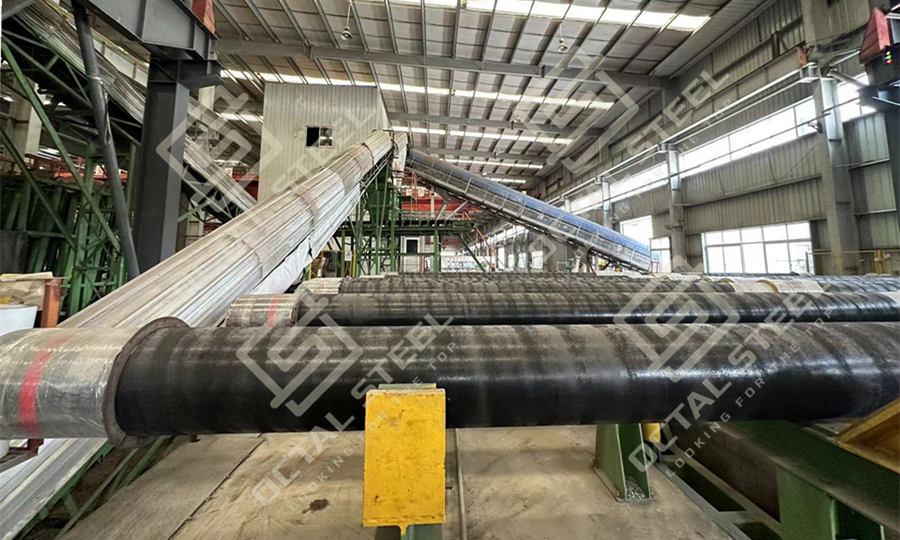
Referred Standards
DNV-OS-F101: Submarine Pipeline Systems – SAWL 245, SAWL 290, SAWL 320, SAWL 360, SAWL 415, SAWL 450, SAWL 485, SAWL 555
ISO 21809-5:2010: Petroleum and natural gas industries – External coatings for buried or submerged pipelines used in pipeline transportation systems – Part 5: External concrete coatings.
• ASTM C42 Standard Test Method for Obtaining and Testing Drilled Cores and Sawed Beams of Concrete
• ASTM C87 Test Methods for Effect of Impurities in Fine Aggregate on Strength of Mortar BS 1881 Methods of Testing Concrete
• ASTM C642 Standard Test Method for Specific Gravity, Absorption and Voids in Hardened Concrete
• BS 3148 Test Methods for Water for Making Concrete
• BS 4449 Material Specification for Carbon Steel Bars for Concrete Reinforcement
• BS 4482 Hard Drawn Mild Steel Wire for the Reinforcement of Concrete
• BS 4483 Specification for Steel Fabric for the Reinforcement of Concrete
• ISO 4012 Test Specimen of Determination of Compressive Strength
Anodes Installation: Sacrificial Anodes – Cathodic Protection
To properly install anodes on concrete coated pipes, any gaps between the concrete and the anode must be filled with an appropriate type of concrete or mastic.
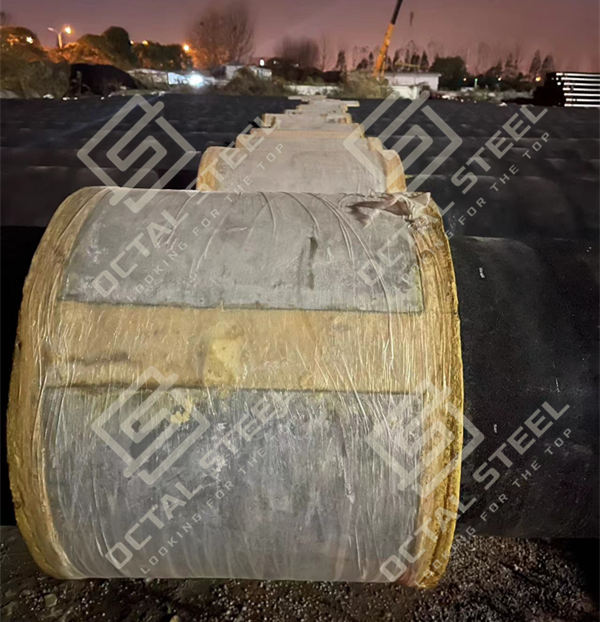
Features of CWC pipe
CWC pipe consists of cement, water, aggregates, and reinforcement materials. Its main advantage is that it ensures stable pipeline performance and provides effective mechanical protection. In comparison to other insulation types, such as pipe-in-pipe, CWC pipe offers cost savings, easier pipeline installation, and convenient operations.
Key notes during concrete weight coating pipe manufacturing processes
(Before coating the concrete, the steel pipe is generally coated with 3LPE coating.)
The first step is to calculate the proportionate quantities of cement, iron ore, sand, and granite aggregate, and then mix them together to achieve the desired density. During the concrete buildup process, it is important to control the position of the steel wire mesh in order to achieve a specific wire depth within the coating. Each joint of the pipe should be weighed to ensure that it meets the project requirements. The concrete coated pipe ends should be cleaned and any excess wire trimmed. After curing for 30 days, the material will be ready for delivery.
The concrete coating can be applied using either machine or form-applied methods and can be prepared to any required thickness on-site. The purpose of the external concrete coating is to safeguard the pipe’s isolation coating from potential mechanical damage during repair, upgrading, construction, and operation. The concrete coating method is considered to be an advanced and highly effective means of protecting pipelines, in accordance with regulatory procedures.
